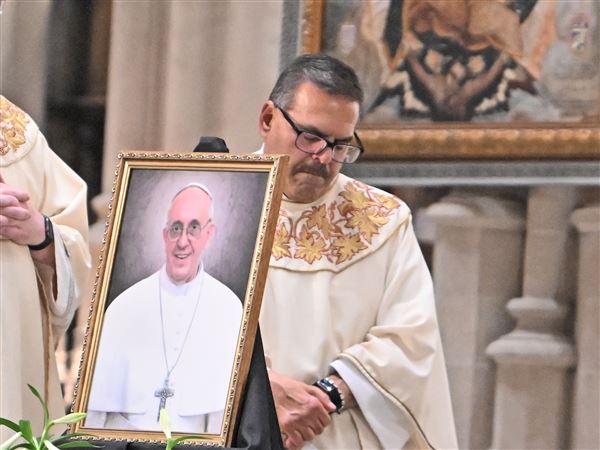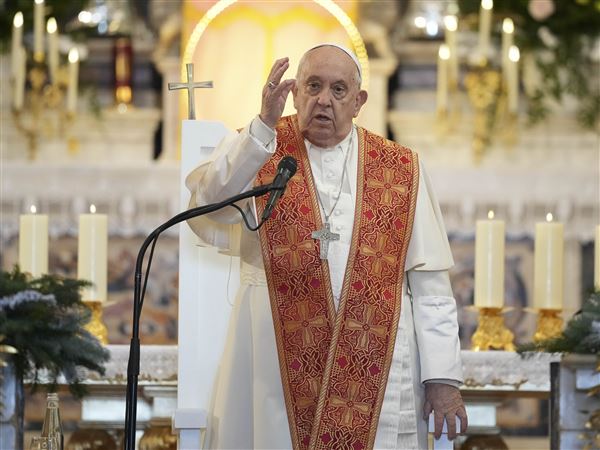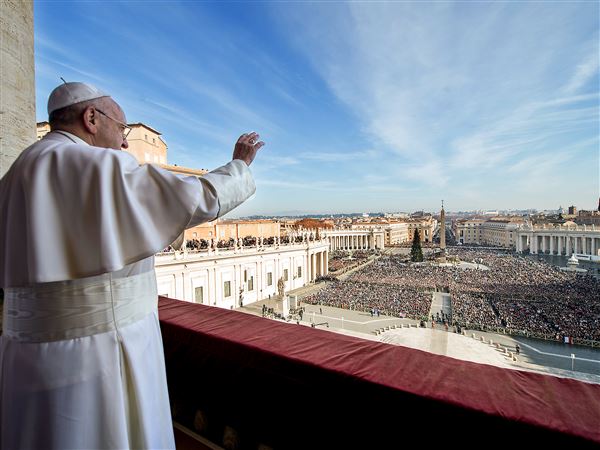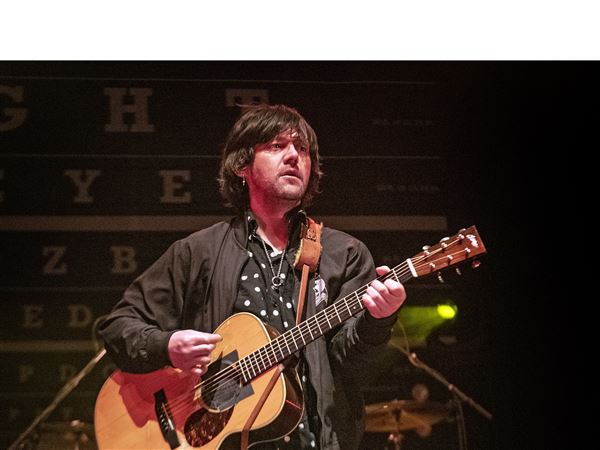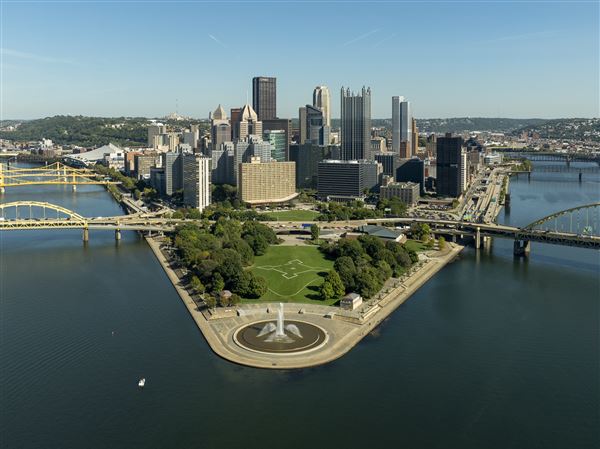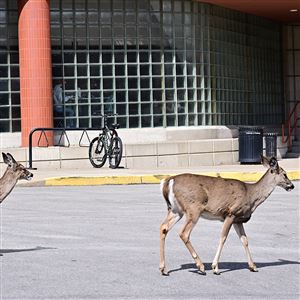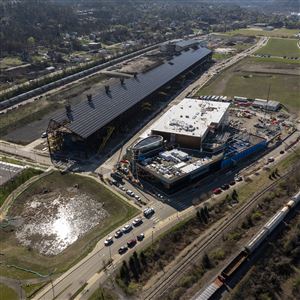You could count on a couple of fingers the number of bands, at least known bands, that could sit around and weigh the question: "Which rock opera should we do?"
The Who not only banged out two of them, but anyone compiling a list of the Greatest Rock Operas of All Time would be hard-pressed not to have in the Top 10 both "Tommy" and "Quadrophenia," the focus of the current Who tour, which stops at Consol Energy Center Sunday.
"Quadrophenia" was released 39 years ago in 1973, so there is no anniversary associated, and it hasn't been in storage that long, as it was the centerpiece of the 1996-97 tour, which played the Civic Arena, when The Who was joined on stage by Gary Glitter as the Godfather and Billy Idol as Ace Face.
With: Vintage Trouble.
Where: Consol Energy Center, Downtown.
When: 7:30 p.m. Sunday.
Tickets: $37.50 - $123.25; 1-800-745-3000.
Why "Quadrophenia" now?
"We've been trying to find something we can do together, Roger and I," Pete Townshend said in the teleconference announcing the tour with Roger Daltrey. "We've gone off on slightly different directions; Roger's been working with a new band; I've been developing new music and writing a book about my life, so we've really struggled to find something to do this time. ... We've been anxious to work together -- before we drop dead."
The 'other' rock opera
If "Tommy," released in the spring of 1969, wasn't the first rock opera -- the dubious honor is often given to a '60s band called Nirvana -- it was at least the first one billed that way, and the earliest rock opera that people have actually heard.
The Who toured "Tommy" hard in 1969-70 (including a show at the Syria Mosque on Oct. 26, 1969), and once finished, the band was ready to put aside the story of the "deaf, dumb and blind" pinball wizard, so Mr. Townshend immediately got to work on a second rock opera -- "Lifehouse." It was about a sci-fi story of a dystopia saved by music, but the band really didn't dig the concept, much to his dismay. So those ideas were funneled into "Who's Next," which remains a high-water mark among Who albums, even if it isn't Mr. Townshend's favorite.
The Who had always been a great singles band, going back to 1965's punchy hits "I Can't Explain" and "My Generation," but the other side to this legendary guitar smasher -- a somewhat arrogant college art major who loved jazz and poetry -- was to find outlets for his more grandiose designs.
In his new autobiography, "Who I Am," he writes that in the spring of 1972, he set out to pen a new rock opera in which, unlike "Tommy," he would stay inside the head of his hero. A note he had scribbled to himself read, "trace the late teens of a kid to the point he experiences a lot of things that [mess] him around."
"When finished," he writes, "it would provide us with a rock-opera piece cohesive enough to replace, even improve on, 'Tommy' as the backbone of our stage show."
After the strain of writing and touring "Tommy" and "Who's Next," the guitarist, back with his family, was not only exhausted, he writes, "I felt cold, depressed, tragic, lost and hopeless." His mind went back to a night in 1964, when he was 19 and spent a few hours sleeping under a bridge with friend Liz Reid after an incident where rival British gangs The Mods and Rockers rumbled.
He quickly outlined the story of Jimmy Cooper, a teenage Mod with "quadrophenic" sides to his personality, reflecting the members of The Who: A tough guy (Mr. Daltrey), a romantic (John Entwistle), a bloody lunatic (Keith Moon) and a beggar, a hypocrite (Mr. Townshend).
The Vespa-riding, "leaper"-popping Jimmy takes part in the Brighton youth riots against the leather-clad Rockers, loses his girl to his friends, is brushed off by his favorite band, becomes disenchanted with the Mods, and ends up adrift on a boat where he might meet his end but where he at least reaches a point of self-revelation.
"We weren't trying to be Mods," Mr. Daltrey said in the teleconference. "We never felt like we were Mods in the first place, but we reconnected with our audience."
Having spent years playing "Tommy" live and becoming intimate with its down moments, Mr. Townshend writes, "The rule we established during the recording was that energetic musical rage would be used throughout. We didn't need throwaway tracks for light relief, we didn't need light and shade, irony or humour."
He notes that "apart from Keith's occasional antics," recording it was a "joyful experience" and that's exhibited in the ambitious performance. Moonie is his usual manic self on drums, Mr. Daltrey digs deep and turns in some of most guttural vocals, Entwistle not only holds it down on bass but broadens the sound with an array of horns. Not only is Mr. Townshend's mix of subtle acoustic and windmilling electric guitar work magnificent throughout, he added everything from synths to banjo, and also recorded all of the record's ambient sounds, from seagulls to the rain.
Who's mess
What happened in the aftermath of the recording was a good deal less joyful.
The Who's British label forced the songwriter/guitarist to rush through the mixing process and immediate tour preparation because, he writes, "The idiots at Track couldn't bear to miss the lucrative Christmas selling period."
"Quadrophenia" became The Who's highest charting album in the States, hitting No. 2 behind Elton John's "Goodbye Yellow Brick Road." The singles, however -- "5:15," "The Real Me" and "Love Reign O'er Me" -- were far less popular than such previous efforts as "See Me, Feel Me," "Won't Get Fooled Again" or "Join Together," and barely cracked the charts.
The Rolling Stone review, written by Lenny Kaye (who would go on to play in the Patti Smith Band), concluded that the album "falls short of the mark," noting that the story line "becomes a crisis of concept," and that the songs "[run] together with little differential to separate them."
"Critical reaction to 'Quadrophenia's' Oct. 1973 release was relatively muted compared with the raging success of 'Tommy,' " Mr. Townshend writes, "but over the years it has come to be seen as superior to 'Tommy' both musically and conceptually."
The "Quadrophenia" tour in late 1973 didn't help matters. The band didn't have time to carry through its vision of the story displayed on four screens, and the music was problematic as well. The Who had taken to using click tracks and instrumental backing tapes to augment the sound on tour, which weren't a good mix this time with Moonie.
"Keith, who had been so brilliant playing along with stage tapes on 'Who's Next,' couldn't seem to cope with the stage tapes we'd put together for 'Quadrophenia.'
"What followed," he adds in the book, "were some of the most shameful performances in our career on stage. I was utterly bereft that although we had made a great record it had not provided us with the new rock opera performance piece we so badly needed."
The biggest disaster took place on opening night of the U.S. tour in San Francisco when the drummer took three "elephant pellets" and nodded off at the kit -- twice -- forcing Mr. Townshend to ask the audience, "Can anybody play the drums?" A 19-year-old fan stepped up to help on a few hits before they gave up on the show. Amazingly enough, you can see it on YouTube.
The Two
Moon stuck around for two more albums before checking out for good in 1978 of a drug overdose, after a long bout with alcoholism. "Keith had been a pain in the ass," Mr. Townshend writes, "but he had also been a constant joy."
The guitarist's immediate reaction, surprising even himself, was to tour. The Who enlisted Kenney Jones of the Small Faces for the "Who Are You" tour in May 1979, which was marred by the stampede in Cincinnati that killed 11 fans before the show. The Who was sent on stage without being alerted to the tragedy, in order to keep the fans in place while police dealt with the turmoil outside.
The farewell tour in '82 turned out to be a false alarm when The Who reunited for Live Aid in '85 and then the BPI Awards in '88, before waging a full-fledged 25th anniversary reunion tour in '89 (that played Three Rivers Stadium) and found Mr. Townshend, beaten down by tinnitus, sticking mostly to acoustic guitar.
The '96 tour coincided with the remastering of "Quadrophenia" and was perceived as a vehicle for pitching the rock opera, which had been made into a movie in 1979, for the same kind of treatment "Tommy" got on Broadway.
"The North American Quadrophenia tour was a blur for me," Mr. Townshend writes. "The press maintained that The Who had lost their way. I played acoustic guitar most of the time; my playing was what really held the rhythm together and defined its subtlety. Acoustic was far better for this purpose than electric. Who fans were irritated by me, however, and there was much talk of everyone being improved if only 'Pete would strap on an electric guitar.' "
To this point, The Who had toured soon after the death of Moon, it had played the night after Cincinnati, and in 2002, it faced another predicament when Entwistle died of a cocaine-induced heart attack in a Las Vegas hotel room on the eve of the tour. The rock world was convinced it was over. Instead, The Two, as some would call them, enlisted bassist Pino Palladino, very different in style from Entwistle, and opened the tour just four days later in Los Angeles. According to Mr. Townshend, they were heartbroken over the loss of their bombastic bassist but didn't want the crew or the fans to suffer.
Since then The Who has carried on for three more tours and one more album, 2006's forgettable "Endless Wire." There has been only a handful of appearances since wrapping up a tour in early 2009, including the much-derided Super Bowl halftime show in 2010 that seems to have killed the momentum for classic rock bands on that all-American stage.
Over the past few years, Mr. Daltrey, 68, has been working with his solo band (which played a solid show here opening for Eric Clapton in 2010) and Mr. Townshend, 67, has been busy with the 515-page "Who I Am."
In lieu of something new, they chose to pull "Quadrophenia" out of mothballs, in part because the guitarist considers it to be the band at its peak. Also, he noted at the teleconference, "For me it's very easy. When I wrote it, I wrote it pretty much all on guitar -- there are a few keyboard bits -- but so everything falls under my fingers, it flows very naturally."
He acknowledged that for his curly-haired counterpart, it's "a taxing vocal piece," a challenge the singer embraces.
"I don't know how many more years I'm going to be able to sing this music," he said. "My voice is great at the moment, so I'm just going to explore the possibilities that one time I might sing 'Quadrophenia' and it's a little bit easier."
The Two are joined by Pete's brother Simon on guitar, Mr. Palladino on bass, drummer Zak Starkey (Ringo Starr's son), two horn players and, oddly enough, three keyboardists. The band is playing the 90-minute "Quadrophenia" straight through, with vintage video clips of the band, social uprisings and the sea, then closing with a five-song encore that has included such classics as "Baba O'Riley," "Won't Get Fooled Again," "The Kids Are Alright," "Behind Blue Eyes" and "Who Are You."
Echoing San Francisco '73, Mr. Townshend made headlines on opening night in Sunrise, Fla., when he stormed off the stage during the encore, yelling that the sound on stage was "too loud!" Since then, he's hung in there till the end.
Based on reviews and fan comments, Mr. Daltrey, who had vocal cord surgery in 2010, is in good voice and The Who is playing "Quadrophenia" with precision and with tributes to its fallen mates. There were a few complaints that the energy lagged in the middle and that the show was short on "hits," but they were from people who may have been confused that they paid to see The Who play its "other" rock opera.
First Published: November 8, 2012, 10:00 a.m.
